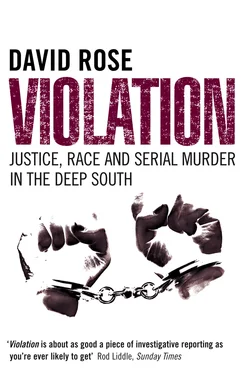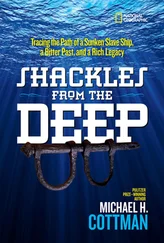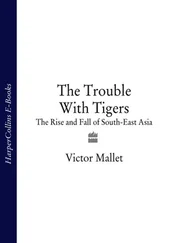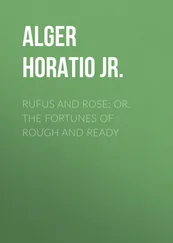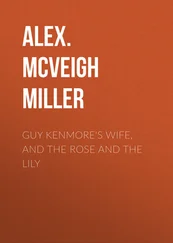‘I decided to go see whether she was asleep,’ Tommie went on, ‘because I felt like she was sleeping late. And so, when I went in the bedroom and seen she was lying on the bed with the, you know, scarf around her neck and about half dressed and blood running down her cheek, and after I saw that, then I ran my hand across to see if she would bat her eyes, and she didn’t. And after that, I ran to the phone and called Mr Woodruff’ – George Junior, Kathleen’s son.
Like the other victims, Kathleen Woodruff had bedroom closets and drawers containing numerous pieces of lingerie, yet she had been strangled with an item that had special meaning for her family – a University of Georgia football scarf. Only two years earlier, she and George Junior (another Georgia alumnus) had been photographed for the cover of the programme for a football game against Clemson University. Inside was an article about George Senior’s playing and coaching career. His uncle, Harry Ernest Woodruff, a brilliant young man who founded the real estate firm which both George Woodruffs (and the still-surviving George Woodruff III) went on to run, had also been on the University of Georgia team. (Harry died aged forty-one in a car crash in 1924, en route to the annual homecoming game between Georgia and the University of Tennessee.)
Kathleen’s body displayed the same signs of strangulation as the other victims’, including the petechial haemorrhages and the fractured hyoid bone. Unlike the earlier victims, she had not been subjected to a massive blow to her head. She had, however, been raped.
Two days after her murder, the enterprising reporter Carl Cannon heaped new humiliation on the CPD in another front-page story for the Columbus Ledger , published under the headline ‘Police Ended Special Patrol 2 Weeks Ago’:
Special Columbus police patrols which had cruised past Kathleen K. Woodruff’s 1811 Buena Vista Road house every night since 25 October were called off two weeks ago because the ‘stocking strangler’ had been silent, police confirmed.
The patrols were resumed Wednesday.
The special details were ordered in late October following the stranglings of two elderly women within four days – the third and fourth stranglings of elderly Columbus women since September.
Columbus waited in horror to see who the next victim would be, and when week after week passed without the dreaded news, many residents turned their thoughts to family, Christmas and other things …
Commander Jim Wetherington, who was in charge of the special details, confirmed they were stopped a little before Christmas. Wetherington said the patrols would resume now.
A police source said that the fruitlessness of the special patrols and the boredom felt by officers was a factor in calling off the special details.
For the first time, the city’s continuing terror was mingled with anger. At a disastrous press conference, Mayor Mickle insisted the police were doing all they could to solve the killings – just as he had already done time and again, the Ledger pointed out, since Ferne Jackson’s death the previous September. ‘We are going to solve this problem,’ Mickle said. ‘We are going to make arrests.’ Next day, the paper published a lengthy attack on Mickle, the CPD and its chief Curtis McClung, in the form of a letter from one E. Jensen:
We the people of Columbus, Georgia are sick! We have a terminal disease called fear, and soon, it will be the death of us all. But the trouble is, it’s justified. My fear stems not so much from the criminal element, but … the ineptness of local law. We are now on centre stage. The world is watching us through the networks. And what do we do? We let the world see our sloppy police work and our praying Mayor! Mickle, get up off your knees and do something!
Stung by the criticism, the CPD tried to mount its own public relations campaign, briefing reporters about the long hours its staff were working and their total commitment to finding the killer. At the behest of Georgia’s Governor, the police were forced to cede their autonomy and set up a joint ‘task force’ with the state-wide detective agency, the Georgia Bureau of Investigation. Twenty GBI agents and support staff moved into a special office that took up the entire basement of the Government Center, bringing with them Columbus’s first crime computer system. Ronnie Jones, the CPD’s chief homicide detective, told reporters that task force members were making huge personal sacrifices; for his own part, he said he was working up to twenty hours each day, while the strangler had invaded his dreams. For the first time in eight years, Jones revealed, he had gone so far as to disappoint his wife by cancelling their annual wedding anniversary holiday in Gatlinburg, Tennessee.
If shared mentalities are partly formed by shared historical memories, among the white citizens, cops and politicians who strove to deal with the stranglings, there was none more potent than the Reconstruction period. Accounts of this era, after the end of the Civil War in 1865, in the local histories of Columbus describe it in extravagant language, suggesting that until the stranglings, Reconstruction had been the city’s deepest wound. They are, of course, written from a white perspective. On the violence and death meted out to African-Americans, the Columbus histories are silent. In their pages, post-war lawlessness and injustice in the South involved whites only as victims.
Like the Lost Cause legend, this narrative, with its wayward, marauding Negroes, ‘carpet bagger’ Northern radicals and ‘scalawag’ Southern collaborators, is not unique to Columbus. For decades, the myth of punitive vengeance by the Civil War’s victors dominated American historiography, even in the North. Its acceptance helped to legitimise the white supremacist oppression of the Jim Crow era, and was further fuelled by works such as Thomas Dixon’s bestselling 1905 novel, The Clansman. Dixon characterised Reconstruction’s aim of achieving legal equality as ‘an atrocity too monstrous for belief’, using the language of visceral racial hatred. Underlying it was the familiar Southern rape complex. In Dixon’s view, the decision to award the vote to the ‘thick-lipped, flat-nosed, spindle-shanked negro, exuding his nauseating animal odour’, had rendered every Southern woman at risk of barbaric violation.
In 1914, D.W. Griffith made cinematic history with his film based on Dixon’s book, The Birth of a Nation. Screened at the White House for Woodrow Wilson and the Supreme Court’s Chief Justice, Edward D White, it depicted a version of Reconstruction that bore only the most distant relationship to the truth. A contemporary scene-by-scene review in Variety provides a representative taste: ‘Soon the newfound freedom of the former slaves leads to rude insolence. Black militiamen take over the streets in a reign of terror. Flashes are shown of helpless white virgins being whisked indoors by lusty black bucks. At a carpetbaggers’ rally, wildly animated blacks carry placards proclaiming EQUAL RIGHTS, EQUAL MARRIAGE.’
Much of the film concerns the efforts of Gus, one such ‘buck’, to defile the innocence of the virginal ‘Little Sister’. Terrified, she tries to flee the pursuing Gus, while the orchestra (in the words of a later critic) ‘plays hootchy-kootchy music with driving tom-tom beats, suggesting … the image of a black penis driving into the vagina of a white virgin’. Just as he is about to catch her, she opts for the preferable fate of tumbling over the edge of a cliff. Needless to say, her death is avenged by the heroic redeemers of the Ku Klux Klan, who lynch Gus against a superimposed image of Little Sister in her coffin. At the film’s climax, a massed Klan cavalry ‘pour over the screen like an Anglo-Saxon Niagara’, to Wagner’s ‘Ride of the Valkyries’.
Читать дальше
